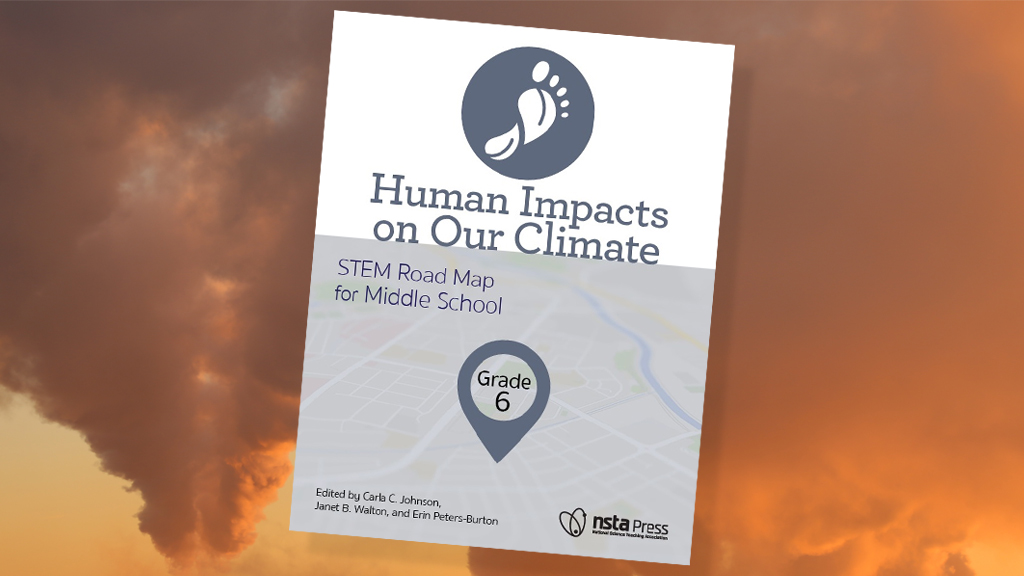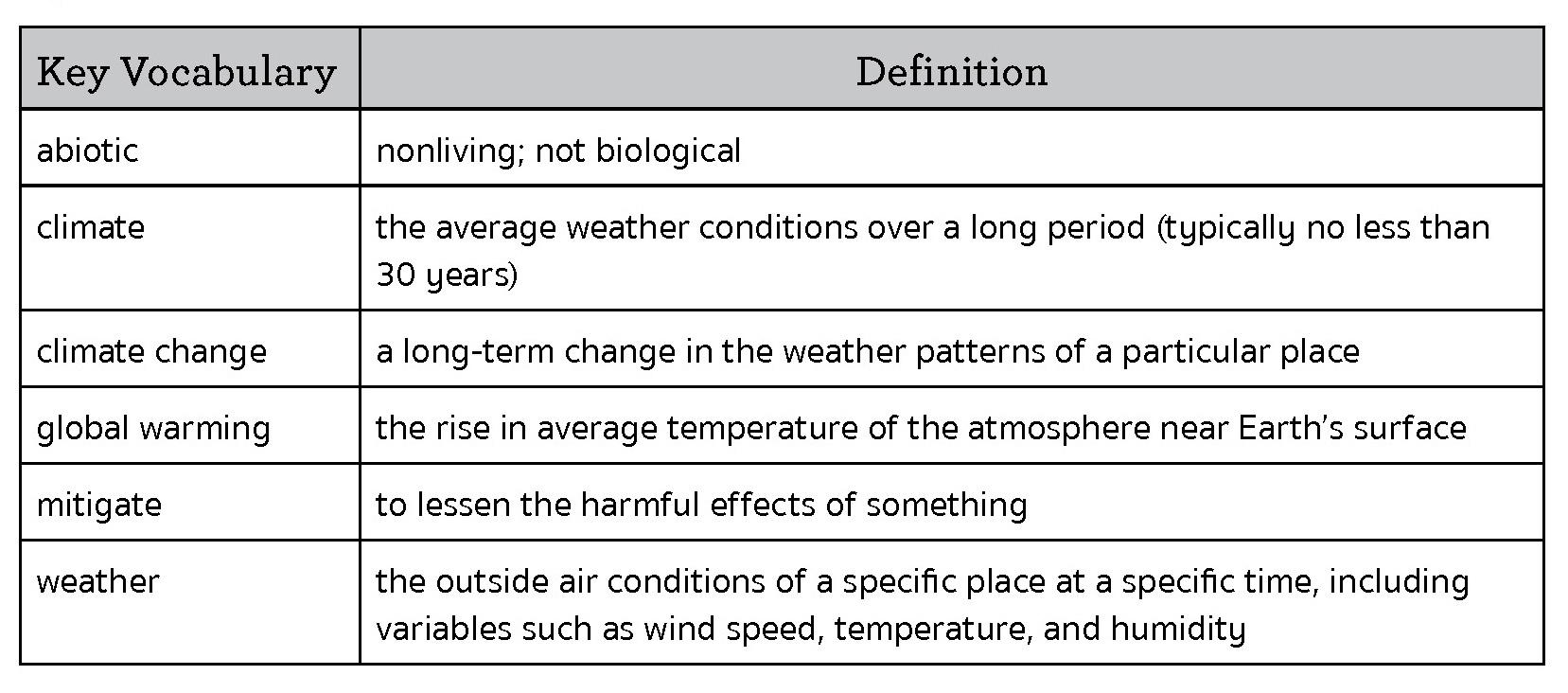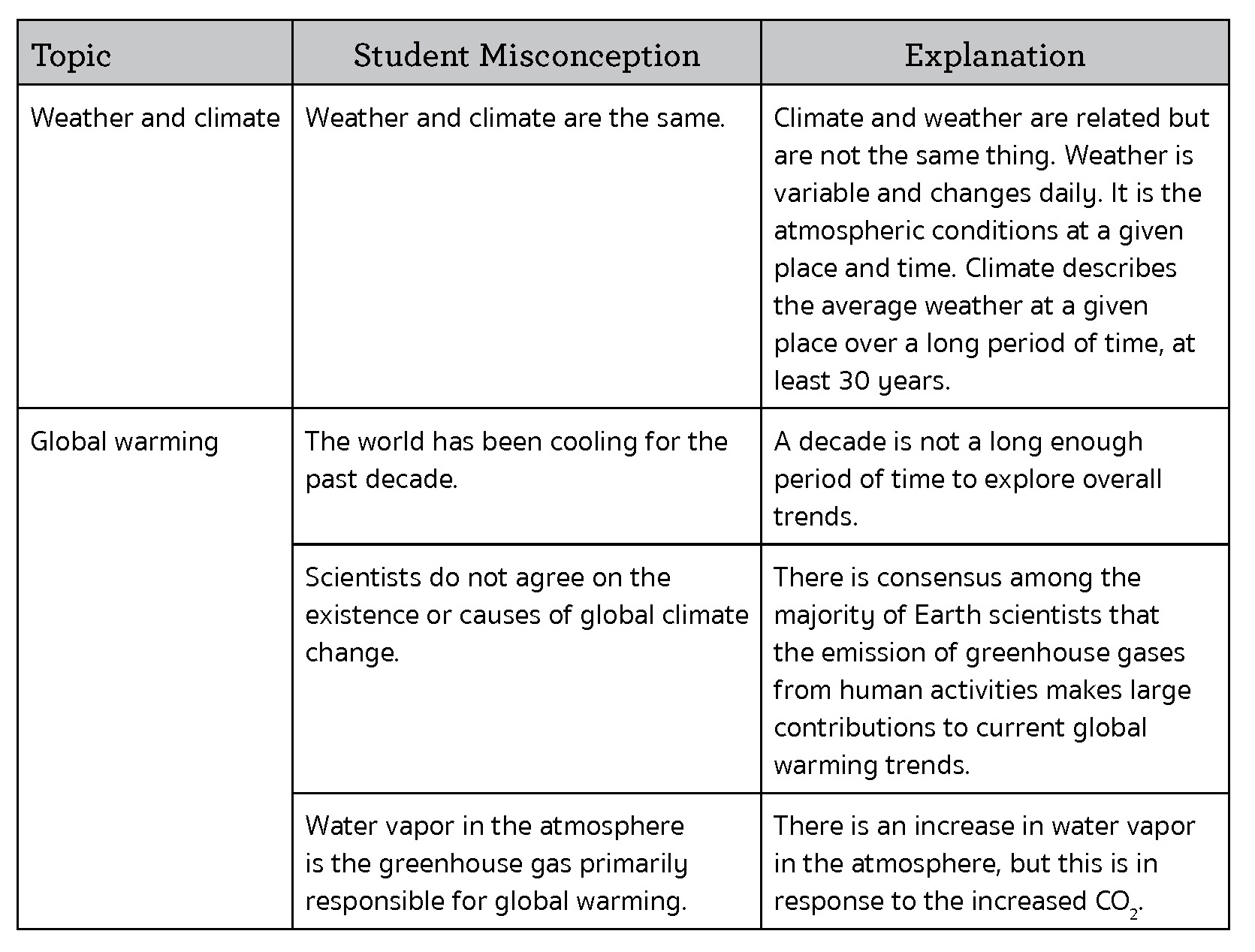NSTA Press Excerpt
Human Impacts on Our Climate Lesson Plan 1: Weather Versus Climate and Global Warming Trends
By Carla C. Johnson, Janet B. Walton, and Erin Peters-Burton


Teacher Background Information
Weather and Climate
An in-depth knowledge of meteorology is not necessary for this lesson. Do become familiar with the Climate Science Literacy principles. According to these principles, a climate-literate person
• understands the essential principles of Earth’s climate system,
• knows how to assess scientifically credible information about climate,
• communicates about climate and climate change in a meaningful way, and
• is able to make informed and responsible decisions with regard to actions that may affect climate. (USGCRP 2009, p. 4)
There are seven essential principles of climate science:
1. The Sun is the primary source of energy for Earth’s climate system.
2. Climate is regulated by complex interactions among components of the Earth system.
3. Life on Earth depends on, is shaped by, and affects climate.
4. Climate varies over space and time through both natural and human-made processes.
5. Our understanding of the climate system is improved through observations, theoretical studies, and modeling.
6. Human activities are impacting the climate system.
7. Climate change will have consequences for the Earth system and human lives. (USGCRP 2009, pp. 10–16)
To understand climate change, you need to have a firm understanding of weather, climate, and the differences between the two. Weather is the current conditions of a specific place and time and includes aspects such as wind speed, temperature, and humidity as variables. Climate is an average of weather that takes place in a certain location. A main difference between the two is time. Weather takes place over short period of time, whereas climate is the average of daily weather for a certain location over an extended period of time. Another way to express the difference between weather and climate to students is to tell them, “Climate is what you expect, and weather is what you get.” For example, you would expect to find a warm climate in the southwestern United States in May. However, you might need a sweater because of the weather, such as when a thunderstorm brings cooler temperatures. Extreme weather occurs when daily weather is significantly different from daily averages. Examples of extreme weather include floods, droughts, tornadoes, hurricanes, and snow and ice storms. Weather models can accurately predict weather for approximately 3 to 5 days in the future, while climate models can predict climate for a much longer time, such 30 years or more in the future (see this NASA website).
Common Misconceptions
Students will have various types of prior knowledge about the concepts introduced in this lesson. The table below outlines some common misconceptions students may have concerning these concepts. Because of the breadth of students’ experiences, it is not possible to anticipate every misconception that students may bring as they approach this lesson. Incorrect or inaccurate prior understanding of concepts can influence student learning in the future, however, so it is important to be alert to misconceptions such as those presented in the table.

NSTA Press publishes high-quality resources for science educators. This series features just a few of the books recently released. This excerpt is from Human Impacts on Our Climate, Grade 6: STEM Road Map for Middle School, by Carla C. Johnson, Janet B. Walton, and Erin Peters-Burton, edited for publication here. NSTA Press publications are available online through the NSTA Bookstore.
Climate Change Earth & Space Science Environmental Science Interdisciplinary Lesson Plans STEM Teaching Strategies Middle School

